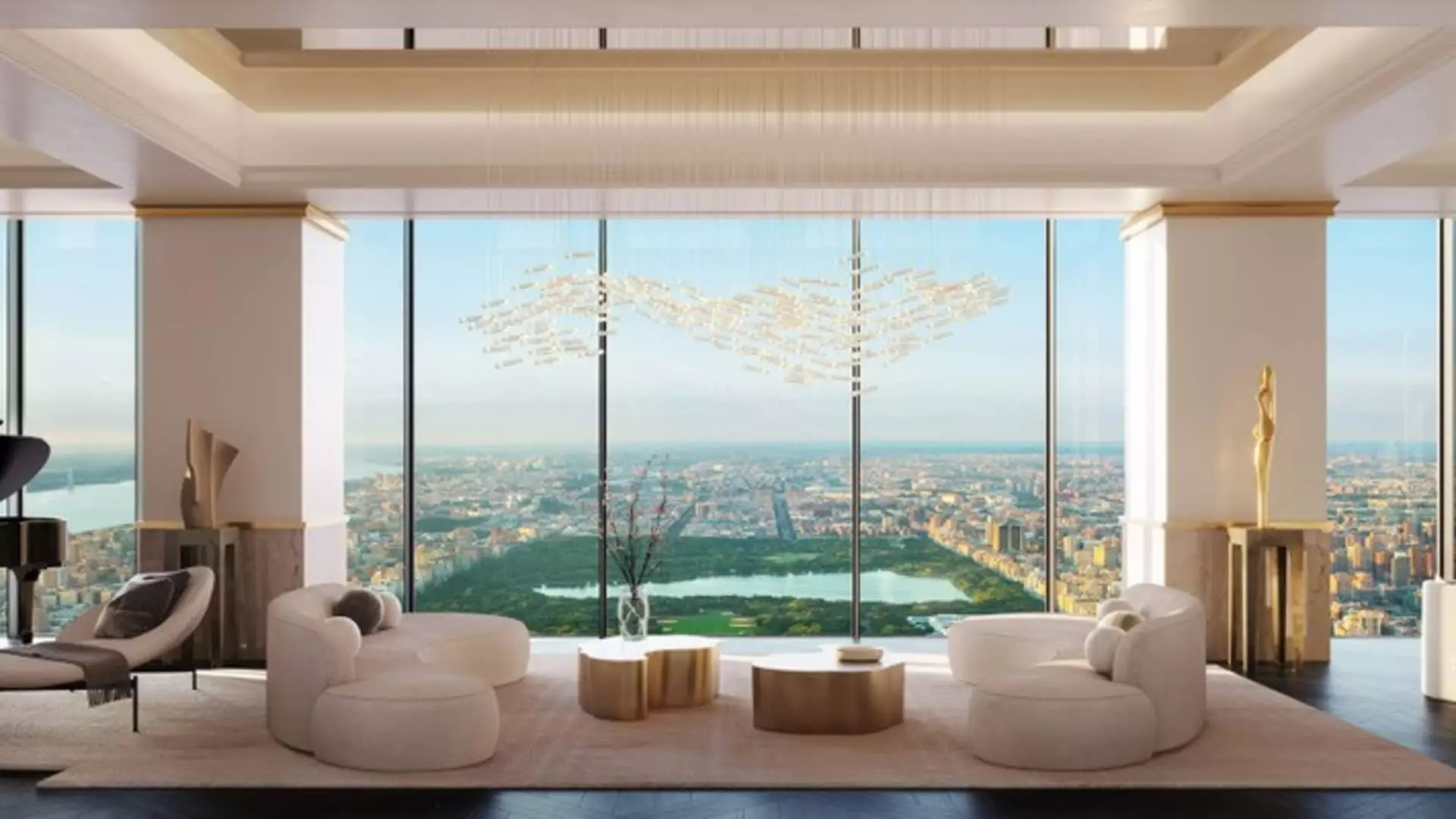In an astonishing juxtaposition, while global markets buckle under the weight of economic volatility and unexpected tariff announcements, New York City’s luxury real estate market shines brighter than ever. On April 3, 2023, as the Dow Jones Industrial Average plummeted by a staggering 1,679 points—and ended the next day down another 2,231 points—the spotlight turned to a glittering new listing: a $110 million penthouse atop the renowned Steinway Tower. This unusual coincidence signals not only the resilience of high-end real estate but also the striking divide between segments of wealth during an era fraught with uncertainty.
Represented by Sotheby’s International Realty, broker Nikki Field remains unfazed by the dramatic swings in the stock market. The affluent clientele she targets appears immune to the economic tremors affecting the masses. “This buyer segment remains untouched by market volatility,” Field argued. In an era where the volatility of the stock market homes in closely on the wealth of the upper crust, it defines a microcosm of America ‘s economic disparity. The ultra-rich emphasize stability in their investments, retreating into the sanctuary of prime real estate as a hedge against plunging stock valuations.
The Jewel of Steinway Tower: A Rare Opportunity
This particular listing—a quadplex that encapsulates the height of luxury—is positioned at the pinnacle of Steinway Tower, extending over four levels and enveloped in bespoke architectural potential. With an unfathomable 11,480 square feet of lavishly designed space, it features five opulent bedrooms, six exuberant bathrooms, serene lounges, and a spectacular terrace boasting views over Central Park and the Hudson and East Rivers. Each element of this penthouse reflects not merely a physical dwelling but a status symbol, a testament to the continuing allure of exclusivity.
The market for luxury properties has soared to previously unfathomable heights, with Jonathan Miller of Miller Samuel observing a growing trend; nine-figure sales, once regarded as mere publicity stunts, are increasingly becoming a reality. In fact, there were eight nine-figure sales in 2024, down from a record nine in 2021. Particularly notable was Ken Griffin’s purchase of a record-setting 24,000-square-foot quadplex at Central Park South, underscoring the fierce competitive landscape for ultra-high-net-worth individuals vying for prime assets.
However, despite the increasing frequency of such colossal transactions, Miller wisely cautioned against interpreting these impressive figures as indicative of a flourishing luxury market overall. Instead, they represent singular high-water marks, detached from the broader fabric of New York’s luxury housing market, which appears to be experiencing a recalibration amid uncertainty.
Investor Sentiment: A Study in Contrasts
While certain segments of the luxury market remain buoyant, it is clear that not all high-end buyers are rushing to make impulsive purchases in this environment. Some brokers have begun to detect a layer of skepticism from potential buyers, as uncertainty looms large over economic policy and its consequences. As quoted by Douglas Elliman’s Noble Black, the multifaceted nature of client sentiment reflects a dual reality: one faction believes that tariff-induced inflation might inflate property values further, while another sees this as an opportunity to pivot out of volatile stocks and invest safely in real estate assets.
In a seemingly binary world, the reality for buyers between $5 million and $10 million shows an acute focus on value, demanding serious scrutiny of property comparisons and lifestyle fit. In contrast, buyers in the $20 million-plus category still venture toward the world of rarity and exclusivity, where the importance of the price diminishes in favor of unique investment opportunities.
As luxury broker Aaron Kirman astutely noticed, efforts toward negotiations have become more strategic, with many buyers preferring all-cash offers. This shift also elongates timelines, as patience grows paramount in securing desired properties. What once might have taken months now stretches to over a year, reflecting a cautious but deliberate approach averse to impulsivity.
The Market’s Evolution: Emma’s Mercy in the Midst of Chaos
If there’s one takeaway from this dynamic landscape, it is the clear evolution of buyer behavior in the face of an uncertain economic horizon. High-end sellers must come to terms with the distinct reality—a chasm has emerged between the aspirations of older valuations and the cautious aspirations of contemporary buyers. Adjustments are now quietly being made as sellers navigate this new ecosystem, deploying strategic price cuts which value perception while targeting discerning clients.
The high-end market is not shrinking; it is transforming. In doing so, it reflects the spirit of resilience within the luxury sector, illustrating a blend of deeply entrenched values and adaptive strategies. Amid market fluctuations, the demand for opulence remains a reflective measure of our broader economic struggles, showcasing the duality of prosperity nestled precariously amid urgent calls for restructuring and equity across socioeconomic lines.

